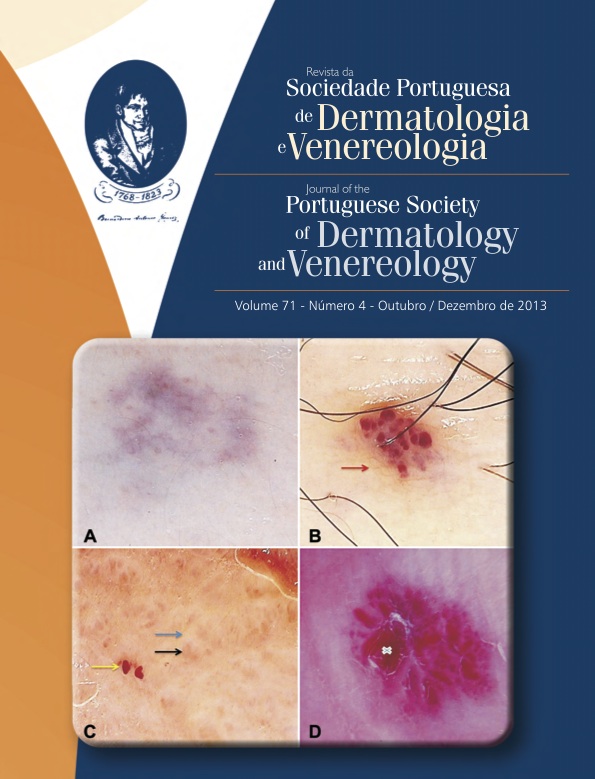EPIDERMOLYTIC PALMOPLANTAR KERATODERMA (VÖRNER TYPE) - A FAMILY STUDY AND REVIEW OF THE LITERATURE
Abstract
Epidermolytic palmoplantar keratoderma (Vörner’s keratoderma) is an autosomal dominant disorder of keratinization characterized by diffuse, non-transgredient thickening of palms and soles, without associated ectodermal features. It is generally associated with mutations of the keratin 9 gene (KRT9), and rarely with the keratin 1 gene (KRT1). We herein report a 16-month-old female patient (index case), born to nonconsanguineous parents, presenting with thick, yellow and diffuse hyperkeratosis confined to the palms and soles since her second month of age. An erythematous band was evident at the edges of the keratosis. Nails, teeth, hair and mucosae were normal, and there were no anomalies in other organ systems. A thorough investigation revealed a total of 15 family members presenting similar clinical features, being the common ancestor an Italian great-great-grandfather of patient’s mother. A lesional skin biopsy obtained from the mother revealed marked orthokeratotic hyperkeratosis with epidermolysis of upper and mid-epidermis. Both the inheritance pattern and the clinical-histological findings were consistent with hereditary palmo-plantar keratoderma of Vörner type. The patient and her mother were treated with 20% and 30-50% urea-containing creams, respectively, with satisfactory response.
Downloads
All articles in this journal are Open Access under the Creative Commons Attribution-NonCommercial 4.0 International License (CC BY-NC 4.0).








